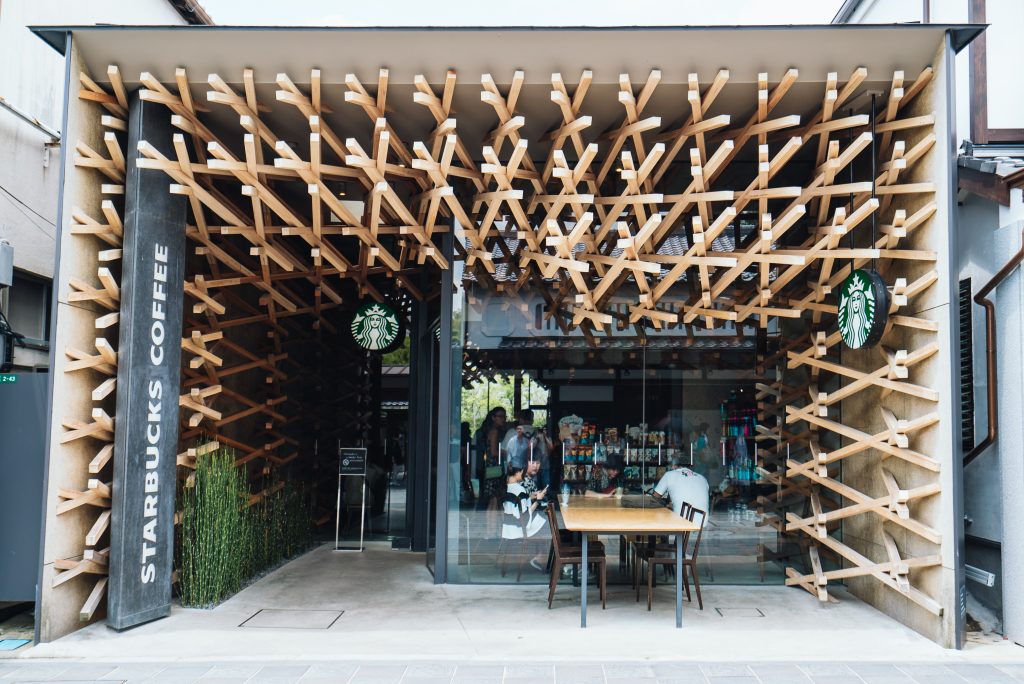
- ARAB NEWS
- 03 May 2024

Japan has a unique relationship with Starbucks, in that, it was the first international market for the popular brand outside of North America back in 1996, but Japan also hosts some of the brand’s most exclusive designs that reflect the country’s distinctive culture.
Starbucks’ Japan integrates cultural architectural elements into the design of the coffee shops by drawing inspiration from Japanese gardens, referred to as “engawa” or corridor-like terrace, as well as a Machiya-style buildings.
The Kawagoe Kanetsuki-dori Starbucks store in Saitama was constructed in 2018 in the traditional warehouse-style using local Japanese cedar. It fuses beautifully and harmoniously into the townscape of its region, which has been conserved since the Edo Period. It carries a slanted wooden roof with gray ceramic tiles, with the brand’s name marked over a wide horizontal wooden board, and a Noren cloth at its entrance, which adds to the traditional touch. The cushions were manufactured with a local Kimono fabric called Kawagoe Tozan.
The Ise Naiku-mae Starbucks store, in Mie Prefecture has very similar components as well and reflects the old-fashioned culture that is proudly maintained.
“There are restrictions for building architecture in Kyoto to conserve the cityscape. However, some Starbucks stores took it to the next level and incorporated the culture, history, and art deriving from the area. One example is the tatami space at Starbucks Kyoto Ninenzaka Yasaka Chaya. It pays respect to the traditional culture of guests taking their shoes off to relax. These stores blend in with Japanese culture and offer, at the same time, a new experience of enjoying coffee,” said Kana Nakanishi, a Tokyo-based product and interior designer.
Kyoto Nineizaka Yasaka Chaya Starbucks store opened in 2017 located in a traditional 100-year-old converted townhouse in Kyoto. The exterior was left in its original condition, where as the interior contains Tatami mats with locally-made fabric pads and overlooks an elegant garden.
Toyama Kansui Park in Toyama Starbucks store has an elevated platform that resembles a Japanese shrine’s main entrance podium.
Dazaifutenmangu Omotesando Starbucks store, which opened in Fukuoka in 2011 merges tradition and modernity. It was designed by one of Japan’s top architects, Kengo Kuma, who is known for his emphasis on texture in design, particularly wood. The design uses an interlacing network of wood (over 2000 wooden batons) that resembles those used in Japanese temples and shrines.
Before the invasion of global chains like Starbucks and other international brands like Tully’s and Dunkin’ Donuts, Japanese coffee shops were tiny and simple, like traditional tea houses, referred to as Kissaten(喫茶店), which means a tea-drinking shop.